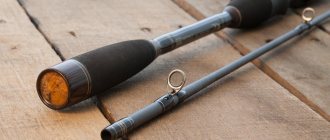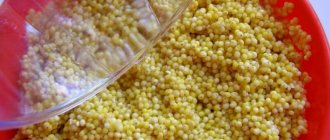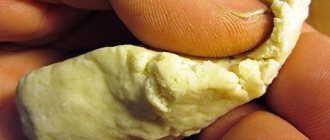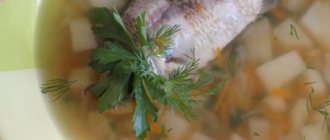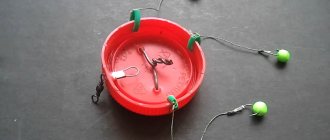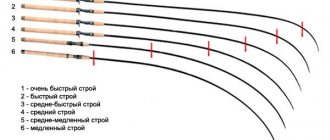Catching crucian carp with pearl barley is almost always a working option that is effective in any situation. This homemade preparation is popular among fishermen not only due to its effectiveness, but also to its affordability. The main thing is to prepare it correctly. There are a lot of recipes where pearl barley is used as an independent ingredient, and together with other additives and flavorings. To prepare pearl barley for catching crucian carp at home, familiarize yourself with all the intricacies of this process, and adhere to the recipe, proportions of water and ingredients.
Choosing the right pearl barley
For successful fishing for crucian carp, approach the choice of pearl barley with all responsibility; the number of bites will depend on its quality. Among the main points that you should focus on when purchasing cereals, experienced fishermen highlight:
- grain size. It is better when they are large with a smooth surface, light, peeled;
- harvest dates. It is optimal if the pearl barley is fresh, collected and packaged in the current season;
- without signs of damage by harmful insects. Bugs, rodents, and grain moths often like to feast on pearl barley grains.
Such a bait, even already boiled and with the addition of flavorings, will weakly attract crucian carp.
For fishing, do not use pearl barley with a specific, putrid odor. This technique will only scare away the prey.
What kind of pearl barley should ideally be
Before you start cooking, you need to immediately understand what effect we want to achieve, and it is also advisable to understand why it is this way and not another.
Fish, and in particular crucian carp, love starch. In pearl barley porridge, there is a share of starch, especially on the surface of the grains. That is why we will strive for some snotty behavior. Starchy “snot”, and even with the smell of garlic... mmm... crucian carp cannot resist. And if the porridge is also fresh, which means bright white after cooking, saturated with its own natural aromas, and the crucian carp does not bite, then you can only ask one question - “Have you chosen the right place?”
So how can you achieve this effect? Perhaps the biggest difficulty is buying fresh cereal. Let's say it already exists.
Next, we forget the possible Internet advice about washing barley before cooking. If you have previously read carefully, you may have already guessed why, that’s right, we need starch on the surface. That’s all, we can move on to the next point – cooking.
How and how much to cook
To properly cook pearl barley for crucian carp, follow the following technology:
- Measure one glass of pearl barley and pour it into a suitable container, preferably steel or enameled. If the grains are clean, there are no husks or insects, then it is not advisable to wash them, otherwise the starch will be washed off, for which the underwater inhabitants of the reservoir value this attachment.
- Add cold water at the rate of 1 cup of pearl barley and 3 cups of liquid. Then cover the container with a lid and put on fire. When the cereal boils, reduce the flame and cook it for 25–35 minutes. On low heat there is no need to worry that the porridge will burn, but on medium heat it is better to stir periodically. When the liquid has almost evaporated, check the grains for readiness using a needle. This technique will allow you to see how the bait will stay on the hook. If necessary, the grains are too hard, then add boiling water and boil them some more.
- Remove the pan with pearl barley from the stove and wrap it in a blanket for a couple of hours.
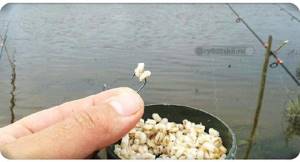
Properly boiled pearl barley will have a medium density consistency, it will fit on the hook without any problems and stay on it. A good bait will be quite slimy to the touch, which is guaranteed to attract crucian carp.
Preparing pearl barley for bait
To make it more convenient to place pearl barley on the hook, it can be prepared in three different ways. Moreover, each method is very effective.
The cooking process depends on what kind of pearl barley is available and what else is on hand. Let's look at different recipes.
Nozzle made from pearl barley grains
Ingredients:
- Barley 250 gr.
- Water 1.5 liters
- Flavoring additives
- Special flavors
Procedure:
- Bring the porridge to a boil.
- Without reducing the heat, cook the barley for 40 minutes. But at the same time, we do not move away from the porridge, since it must be constantly stirred.
- Next, remove from heat, add dressing and flavorings.
- Let the porridge cool.
This recipe is useful for those who are going fishing spontaneously. Since it takes no more than an hour to prepare the bait. And despite the fact that the grains turn out to be hard, this nuance does not in any way affect the quality of the catch.
Cell nozzle
Ingredients:
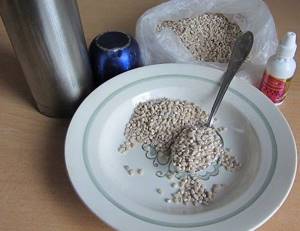
- Small pearl barley 250 gr.
- Water 1.25 liters
- Flavoring additives
- Flavors
Procedure:
- Over medium heat, bring the pearl barley to a boil.
- Reduce the heat to low and cook for an hour, remembering to stir.
- Remove from heat, season and leave to brew in a warm place for about another hour.
This recipe is considered a classic. In addition to the fact that the porridge is very rich in aromas, it also sticks perfectly to the hook.
Barley nozzle using soda
Ingredients:
- Yachka 250g.
- Water 1.25 liters
- Soda - 1 teaspoon
- Flavoring additives
Procedure:
- Bring the pan to a boil over medium heat.
- While stirring the porridge, add soda and do not stop the procedure until the foam disappears.
- We continue to cook the pearl barley over low heat for an hour.
- Remove from heat and let it brew for another hour.
- Then we add flavorings and flavorings.
Thanks to soda, we get an excellent soft bait with an attractive pink tint.
Advice. To prevent the porridge from becoming bitter, the cereal should be pre-soaked in cold water.
It is worth noting that the following components can be used as flavoring additives:
- Anise oil
- Corvalol drops
- Vanilla sugar
- Strawberry syrup
- Cinnamon
- Honey
- Unrefined oil
Advice. Barley should be seasoned with one specific additive. Because mixed aromas can scare away fish.
How to steam pearl barley for crucian carp
The algorithm for preparing barley using the steaming method is as follows:
- Pour the required amount of cereal into a metal container.
- Pour boiling water so that the water is 2-3 fingers higher from the level of the grains.
- Place on a wooden surface.
- Wrap the pan on all sides, using a couple of blankets or blankets.
- Leave to steam overnight.
To steam pearl barley, you need to use water that has just boiled. There is no time to hesitate here; the grains must be poured with boiling water and immediately wrapped. You should not place the container on the floor or on a windowsill; the effect will be weak.
How to cook properly
First you need to boil the cereal using a slow cooker or stove. But the best option would be to steam it in a thermos.
Before cooking the cereal, you should sort it, discarding the darkened grains. After this, the pearl barley should be thoroughly rinsed under cold water. It is better to divide the resulting mass into several containers in order to ultimately get one version of bait with different odors (anise, garlic, etc.).
After the bait is ready, you should check whether the necessary gear for catching crucian carp is in place. With this method of fishing there is no need for a complex fishing rod; the most ordinary one will do.
How to steam in a thermos
This method is suitable for hiking conditions. It is simple and accessible, just follow the following sequence of actions:

- Pour pearl barley into a thermos, measuring 100-150 g. It is better to use heat-insulating dishes, otherwise you will need to wrap it additionally so that the grains are steamed.
- Pour boiling water over the pearl barley, calculating 1 cup of cereal for 3 cups of liquid. Then seal the thermos tightly. There is one nuance here: you don’t need to pour water right up to the neck, and fill it more than 1/3 of the entire volume.
- Infusion time is 3–4 hours. If the thermos does not retain heat well inside, then after a couple of hours the boiling water must be replaced with a new one.
- Drain off excess liquid and pour pearl barley onto a paper towel or napkin. Thanks to this you will be able to get rid of unnecessary moisture. Change the paper towel until it is dry.
- Roll pearl barley in breadcrumbs. If attractants are used, they are poured into breadcrumbs until the grains are processed.
To steam pearl barley in a thermos, you need a high-quality thermos and boiled water. Then the result will be high.

Preparation
How to cook pearl barley for crucian carp fishing? To quickly prepare the cereal, it must be soaked in warm water for 1-3 hours in advance. You will need pearl barley and water in a ratio of 1:5. The pan must be placed on the fire, which should be reduced as it boils. During cooking, you need to add salt and sweeten the product to improve the taste. For 1 liter you need 1 pinch of sugar or salt. But you should not add salt-containing seasonings.
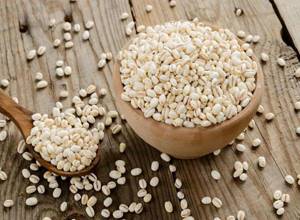
How long to cook pearl barley for crucian carp fishing? This is done for an hour over low heat, and the product must be stirred regularly. After the water has boiled away and the grains are ready, you need to mix them and let them brew. Then you can add aromatics, for example, anise, vanilla, cinnamon, honey, garlic. The product is also prepared with the addition of caramel strawberry candies and raspberry syrup.
Recipes with additives
Barley with garlic perfectly attracts crucian carp; it is not difficult to prepare. You can use either a spray can or a natural product. You can process pearl barley kernels immediately before fishing, casting them to a promising fishing point. Use 2 medium-sized cloves of garlic for one glass of pearl barley. First you need to grate them finely or pass them through a garlic press. This spice should be added to the porridge only after cooking the porridge, before the pan is wrapped in blankets.
With peas
It is not only effective to use pearl barley as a bait, but also for baiting crucian carp. This cereal is universal in use and easy to prepare. It is good to take it fishing with float and feeder gear, where there is a feeder. The bait composition has a plastic consistency, perfectly absorbs odors and attracts fish.
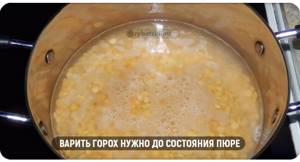
The step-by-step preparation of pearl barley with peas is as follows:
- Rinse the peas.
- Place in a suitable container and add water taking into account 1:4.
- Cook over low heat until pureed.
- Add pearl barley grains.
- Cook until fully cooked (about 40 minutes).
- Remove from the stove, wrap in a blanket or blanket.
- Leave for a couple of hours.
With semolina
This component further increases the chances of catching crucian carp.
Cooking technology:
- Pour pearl barley into a saucepan and add water at a ratio of 1:3.
- Place on the stove and cook over low heat for 30 minutes.
- Drain off excess water and place the finished grains on a paper towel or napkin.
- Sprinkle barley with dry semolina.
- The bait for crucian carp is ready for use.
Making bait
There are recipes that allow you to prepare bait barley. Let's look at the most interesting and catchy dishes that can be useful for catching crucian carp!
"Hedgehogs"
From pearl barley, fishermen learned to prepare such bait as “hedgehogs”. The good thing about bait is that when it gets into the water, it forms an attractive trail. Small particles slowly sink - the fish sees this from afar, smells it and swims.
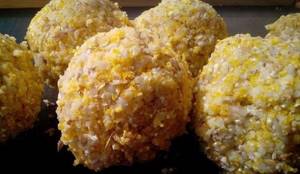
Some fishermen add crushed corn to them. This allows you to cover more fish preferences. For example, when a crucian carp bites either on pure pearl barley or on corn kernels, this is a universal option.
“Hedgehogs” are made like this:
- Fill the pearl barley with water and cook until tender, as in the very first recipe.
- Drain the water, put the pan back on the fire and, stirring, dry slightly.
- Pour the contents of the container into a durable (otherwise it will tear) plastic bag.
- Throw in breadcrumbs, ground cookies and some gingerbread crumbs.
- We squeeze the neck of the bag, after inflating it. It looks like a balloon with bait inside.
- Shake for five minutes to combine.
- Pour the contents onto paper or cloth.
- Roll the resulting porridge into balls, and then sprinkle them with breadcrumbs again. Ready!
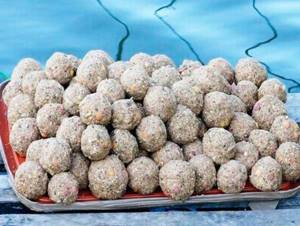
It is also possible to add “Revita” to “hedgehogs” for even greater attraction.
Pea mixture
You can cook pearl barley for fishing by mixing in other grains that are attractive to fish. Chopped fish with peas attracts not only crucian carp, but also bream and carp.
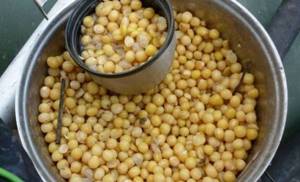
Peas take longer to cook, so you need to add pearl barley after 60-90 minutes.
Recipe:
- We wash both main components.
- 1 tbsp. pour peas with 6 glasses of water.
- Place the pan on the stove and cook for 1-1.5 hours.
- Reduce the heat to low, add one glass of chopped meat and wait another 30-60 minutes.
- Remove the container from the heat, cover with a lid and place in a warm place - the porridge should brew.
This dish is actively used by feeders: they put grains on hooks, and fill feeders with the rest.
Pearl barley bait
In summer, fertilizing with pearl barley grains works great for crucian carp, if it is “ennobled” with additives that are interesting for the fish.

With breadcrumbs
Recipe for catchable pearl barley bait:
- Measure out one glass of cereal, pour it into a saucepan and add water at a ratio of 1:3.
- Cook until done over low heat.
- Drain off excess liquid and pour onto a napkin or paper towel.
- Place the dried cereal grains in a bag and add crushed cookies, preferably soft ones. Saltine crackers are not suitable in this case.
- Mix well and pour onto newspaper.
- Sprinkle with breadcrumbs.
With millet
The algorithm for preparing bait for crucian carp consists of the following manipulations:
- Pour the cereal into a suitable container and add water at a ratio of 1:3.
- Cook for 20 minutes.
- You can add sugar, salt, vegetable oil.
- Add millet and reduce heat.
- Cook for another 40 minutes, stirring regularly.
- Remove from heat and let cool.
Storage
Freshly cooked pearl barley can be stored for a long time only in the container in which it was cooked. However, over time, it gets wet in it, sticks together, and becomes unusable. Therefore, in order to preserve it for a long time, it is necessary to bring it into a dried state - sprinkle it with breadcrumbs or dry bait, and dry it on newspaper. After this, the porridge can be poured into a box and put in the refrigerator for storage. She can calmly lie there for three to four days.
It is better not to do this and use it fresh. Only fresh porridges have the greatest effect on fish. This is especially important when flavoring is added. Over time it will evaporate and you may have to add it again. Some flavorings lose their properties, and if the bait or bait with them was not used up immediately, they no longer attract, but rather scare away the fish.
You can ask your question to our author:
Catching crucian carp with pearl barley

To catch the coveted trophy, you need to correctly place the pearl barley on the hook. Depending on the size of the hook, the appropriate number of grains is used. If you catch fish on a hook with numbers 16,18, then one piece is enough, and for numbers 9,10 – 2-3 pieces. The pearl barley is pierced along the groove, the sting should stick out slightly.
For greater effectiveness, pearl barley is combined with maggots, bloodworms, worms, and steamed oatmeal. Such sandwiches attract large individuals.
It is worth looking for crucian carp in places overgrown with vegetation. Fishing mainly takes place using a float rod. If the hunt is for trophy specimens that are found far from the shore, then you need to use a feeder or donkey. The thickness of the main line should be 0.18 mm, and the leader - 0.1-0.12 mm. This is quite enough to catch individuals weighing up to 0.5 kg. To catch large crucian carp, it is better to use a braided line with similar parameters.
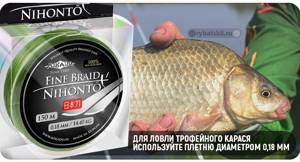
Having arrived at the reservoir and choosing a fishing spot, you need to feed it. Then they throw out the tackle and wait for bites. Fishing is neat, without unnecessary fuss.
Catching crucian carp using pearl barley is both promising and at the same time exciting. Success will depend on the freshness of the cereal used and proper preparation. You can enhance the effect of bait and groundbait using garlic, honey, dill, sunflower oil, cake, as well as vanilla and anise. But you need to add flavorings in moderation.
Barley and its preparation for fishing for crucian carp
Experienced fishermen know many ways and techniques for a good bite. To make fishing as productive as possible, various baits and lures are used.
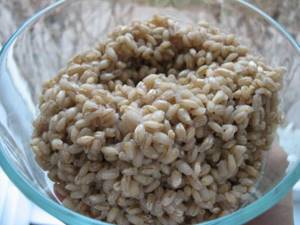
Due to its low cost and high nutrient content, pearl barley occupies a leading place in use for a good catch.
This grain crop is especially attractive for catching river and lake fish, such as crucian carp, bream, rudd or roach.
In order for the smell and taste to attract as many fish as possible, you need to know how to not only place pearl barley correctly on a hook, but also know the correct cooking technology.
Since pearl barley grains are excellent not only as bait, but also for groundbait. Let's take a closer look at all the options for using pearl barley to hunt for a good catch.
Pearl barley recipes for different types of fish
Pearl barley is used as bait mainly in warm waters and during the warm season. Since during this period the fish feeds mainly on plant foods, using barley porridge as bait, the fisherman will be able to catch a rather impressive trophy.
Note: Pearl barley is considered a suitable bait for almost all types of peaceful fish, such as bream, crucian carp, carp or silver bream.
The number of grains placed on a hook directly depends on its size. The larger it is, the more grains will have to be planted.
At the same time, pearl barley cannot be called a completely universal bait. Different types of fish have individual taste preferences, so some differences, depending on the type of fish, still exist.
For bream
To catch bream, it is best to steam pearl barley in a thermos. The grains should remain relatively hard, so the cooking process should not exceed 45-60 minutes (Figure 3).

Figure 3. Pearl barley porridge for bream can be flavored with honey or sweet apples
Bream loves various additives and flavorings. Apples and honey are considered the most catchy, but the apples should be sweet, not sour varieties: a sour taste, on the contrary, will scare away the fish.
Storage methods
Before going fishing, pearl barley should be placed in a tightly closed container. This can be a special box for storing baits or a regular jar with a lid. The main condition is the ability to hermetically seal the contents inside. The absence of air flow will ensure longer preservation of the porridge and prevent premature drying of the grains.
Did you know? Some fishermen claim that crucian carp “takes” even more readily to sour porridge. In fact, there is no officially confirmed information about this fact.
It is recommended to store the finished cereal in the refrigerator for no more than 3 days. If there is bait left after fishing, it is better to throw it into the pond. Otherwise, there is a possibility that it will disappear and turn sour.
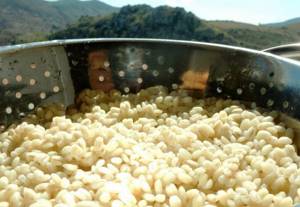
Advantages of bait
You can make pearl barley for fishing with this grain. Feeder fishing will be much better if decoy is added. To prepare the cereal (1 cup), add water (3 cups), then cook for half an hour. Then you need to place the grains on a dry surface and sprinkle semolina on top.
You can add vanilla, honey, sunflower oil. The best preservation of pearl barley is ensured with breadcrumbs. In addition, with a bad bite, the separated crumbs encourage the crucian carp to bite.
Attaching bait to a hook
Experienced fishermen know many ways and techniques for a good bite. To make fishing as productive as possible, various baits and lures are used.
Due to its low cost and high nutrient content, pearl barley occupies a leading place in use for a good catch.
This grain crop is especially attractive for catching river and lake fish, such as crucian carp, bream, rudd or roach.
In order for the smell and taste to attract as many fish as possible, you need to know how to not only place pearl barley correctly on a hook, but also know the correct cooking technology.
Since pearl barley grains are excellent not only as bait, but also for groundbait. Let's take a closer look at all the options for using pearl barley to hunt for a good catch.
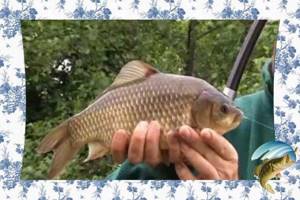
To make it more convenient to place pearl barley on the hook, it can be prepared in three different ways. Moreover, each method is very effective.
The cooking process depends on what kind of pearl barley is available and what else is on hand. Let's look at different recipes.
Ingredients:
- Barley 250 gr.
- Water 1.5 liters
- Flavoring additives
- Special flavors
Procedure:
- Bring the porridge to a boil.
- Without reducing the heat, cook the barley for 40 minutes. But at the same time, we do not move away from the porridge, since it must be constantly stirred.
- Next, remove from heat, add dressing and flavorings.
- Let the porridge cool.
This recipe is useful for those who are going fishing spontaneously. Since it takes no more than an hour to prepare the bait. And despite the fact that the grains turn out to be hard, this nuance does not in any way affect the quality of the catch.
Cell nozzle
Ingredients:
- Small pearl barley 250 gr.
- Water 1.25 liters
- Flavoring additives
- Flavors
Procedure:
- Over medium heat, bring the pearl barley to a boil.
- Reduce the heat to low and cook for an hour, remembering to stir.
- Remove from heat, season and leave to brew in a warm place for about another hour.
This recipe is considered a classic. In addition to the fact that the porridge is very rich in aromas, it also sticks perfectly to the hook.
Ingredients:
- Yachka 250g.
- Water 1.25 liters
- Soda - 1 teaspoon
- Flavoring additives
Procedure:
- Bring the pan to a boil over medium heat.
- While stirring the porridge, add soda and do not stop the procedure until the foam disappears.
- We continue to cook the pearl barley over low heat for an hour.
- Remove from heat and let it brew for another hour.
- Then we add flavorings and flavorings.
Thanks to soda, we get an excellent soft bait with an attractive pink tint.
Advice. To prevent the porridge from becoming bitter, the cereal should be pre-soaked in cold water.
It is worth noting that the following components can be used as flavoring additives:
- Anise oil
- Corvalol drops
- Vanilla sugar
- Strawberry syrup
- Cinnamon
- Honey
- Unrefined oil
Advice. Barley should be seasoned with one specific additive. Because mixed aromas can scare away fish.
When cooking using this method, you do not need a stove, so the porridge will definitely not burn.
And the speed of the process makes this method very attractive to fishermen:
- Preheat the thermos.
- Mix pearl barley with flavoring and additive.
- Pour into a thermos and pour boiling water 5 cm above the level of the cereal.
- Leave for 5 hours.
Everything is done very quickly and simply. But you need to take into account the time the barley stays in the thermos. If you keep it for a couple of hours, the grains will be hard.
If you steam for more than 7 hours, the pearl barley will turn out to be very soft and not suitable for bait.
The amount of cereal must be filled taking into account the volume of the thermos. During heat treatment, the grains increase several times, so they should not fill the capsule more than 2/3.
Advice. The grains will steam faster if the thermos is placed in a horizontal position.
After we have familiarized ourselves with different recipes and methods for preparing barley, we need to know the rules for placing bait on a hook.
Properly cooked grains should have a relatively soft consistency and not stick together. The number of grains placed on the hook depends on its size.
The grain is pierced with a sting in the middle, where a dark stripe is located. This way the grain will not fall apart.
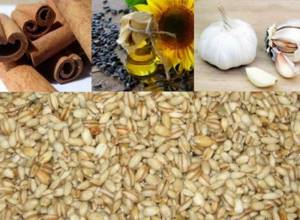
If the bite is very weak, then you can try to make an impromptu canape for the fish. Place not only pearl barley on the hook, but also other types of vegetable baits. Barley can be alternated with worms, bloodworms or oatmeal.
How to cook pearl barley for crucian carp fishing? To quickly prepare the cereal, it must be soaked in warm water for 1-3 hours in advance. You will need pearl barley and water in a ratio of 1:5. The pan must be placed on the fire, which should be reduced as it boils. During cooking, you need to add salt and sweeten the product to improve the taste. For 1 liter you need 1 pinch of sugar or salt. But you should not add salt-containing seasonings.
How long to cook pearl barley for crucian carp fishing? This is done for an hour over low heat, and the product must be stirred regularly. After the water has boiled away and the grains are ready, you need to mix them and let them brew. Then you can add aromatics, for example, anise, vanilla, cinnamon, honey, garlic. The product is also prepared with the addition of caramel strawberry candies and raspberry syrup.
We suggest you read: Fishing with a wobbler
How long and how to cook pearl barley for fishing? These are the questions that interest novice fishermen. Cooking time is usually from 40 minutes to 2 hours. The duration of the procedure depends on the pan, method, variety, freshness, grain size. The duration is also determined by what kind of porridge you want to get.
How much water is required? According to the standard recipe, you need cereal and water in a ratio of 1:5. But there are some subtleties. To obtain an elastic, hard grain of water, you need to take 2.5-3 parts. To make a viscous, slimy porridge, increase the water to 6-8 parts. When choosing a container, it is necessary to take into account that after cooking the grain swells, so the volume of pearl barley increases by 2 times.
Which pearl barley should you choose, soft or hard? There is no specific answer to this question. The option for preparing and planting grains is determined depending on the reservoir, bite, and weather. It is only important that the bait is not very viscous and does not soften in your hands.
If fishing is done with a fishing rod, then the grain needs to be soft. To use bait, you need to slightly undercook it so that the pearl barley does not fly off during casting. In addition, it will be difficult for the fish to eat hard grains, so they will spend a long time in the feeding area.
With a weak bite, it is advisable to take softer pearl barley. If small fish quickly eat the bait, then you need to take hard grains. You need to check how the bait is held on the hook.
These recipes help you understand how to cook pearl barley for fishing. The recommendations will allow you to correctly attach the hook. If it is 16th and 18th size, then you need to take 1 grain. On the 9th and 10th you can take 2-3 pieces. You need to pierce the grain in the middle, where there is a dark groove. The pearl barley will be pierced through, and the hook will be open.
If you use steamed cereal, you can create a “sandwich”. Between the grains you need to plant bloodworms, maggots, steamed oatmeal or a worm. Usually these combinations help during sluggish biting. It is important to ensure that the bait is closed so that it does not dry out.
The attachment is a little more complicated, but not in terms of preparation, but in terms of choosing the appropriate recipe.
As you know, every fisherman has his own opinion about what and how to do, and this opinion is often not even subject to discussion. That’s why you can find a lot of recipes about the proper preparation of pearl barley on the Internet and in magazines. We tried to single out a few of them that really work and give the fisherman the opportunity to choose the method of “improving” the bait. To do this, consider several conflicting recommendations from different pros.
Controversial issue. When this porridge is cooked for a long time or when steamed, starch is released, which gives it such a “snotty” appearance. Fish, as you know, is not such an esthete as a person, and therefore does not disdain such components. Moreover, having an excellent sense of smell, it is good at capturing any attractive smell, including this mucus.
Other fishermen still advise rinsing the grain after cooking and laying it on newspaper to dry, and only then putting it in a jar for transportation. In this case, the grains are clean and whole.
If the bite is weak, it is better to use softer grains. When eating small things, it’s tougher. The main thing is that the bait stays well on the hook and is attractive to the fish. And its tastes are changeable, but with experience comes an understanding of what the fish wants in a particular body of water.
This question generally applies to all home-made attachments. As practice shows, a little salt in porridge has never been a bad thing. Salt is a flavor enhancer. The question is its reasonable quantity. A small pinch for about a liter jar of ready-made porridge will be quite enough. Although many do not use salt and are happy with their catches.
How long to store?
There is an opinion that they catch well with slightly sour pearl barley. We ourselves have noticed such a predilection for fish, but in relation to sour corn for fishing. It is better to use fresh pearl barley. You can store it in the refrigerator, but no more than 2-3 days. After this period, it is worth adding it as bait, and boiling or infusing a new one for bait.
What to cook with?
Water is standard. You can add milk. Better yet, steep hemp grains in water for several hours, then boil them in the same water for 10 minutes and add pearl barley grains.
You can do it this way or that, the main thing is to choose the optimal cooking time for your pan, stove and thermos. The process of steaming in a thermos is simpler and requires less attention, but does not always provide the opportunity to obtain optimal “soft-hardness”.
The time for cooking or infusing pearl barley depends primarily on the pearl barley itself. When purchasing, you should pay attention to its color. Fresh grains, which cook faster, have a light gray color, and stale pearl barley looks darker.


